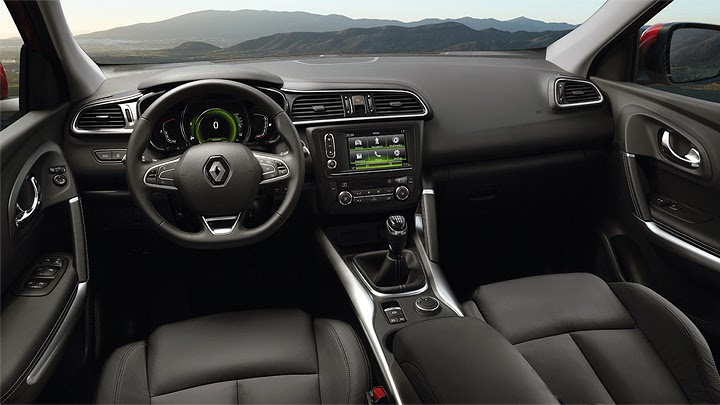
The French company made its first attempt to enter this market back in 2006, when crossovers weren’t even half as trendy as they are now. However, instead of taking the opportunity to help defining how would the new category be, Koleos turned out to be too bland. It looked like a Clio which had been inflated until just before becoming a Scénic, while the cabin was just inexpressive. Its sales were bad enough to convince Renault not to invest in crossovers for several years, but the problem was that, in the meantime, almost any of the younger crossovers managed to sell very well – ironically, two of the best examples of this were Dacia Duster and Nissan Juke, created by the same Renault-Nissan Alliance. Probably in the beginning of the current decade, Renault decided it was time to change.
Over the past few years, Renault and Nissan invested in novelties for both inside and outside their vehicles, and the results have been impressive. Since most of these were related to crossover models, it was just a matter of time for the French side not to resist anymore. But everything was done in order to give Kadjar a head start. From the brand new CMF platform to even some styling cues, there’s much in common with Nissan’s own batch for this category – this car would be Qashqai’s frère. Nevertheless, the makers managed to combine the Japanese rationality to a style which exhales Frenchness from anywhere you look. Part of what makes this car so interesting is the fact that most of such impression comes from a magnificent use of elements which are actually quite simple.










The typical ones, such as the V-shaped grille which connects the headlights and holds a huge logotype, is bigger and sits taller, which aids to an imponent look. The sleek head and tail lights were placed on the extremities in order to make the vehicle look wider. And reducing the colored zones by painting the lower portion in black gives a feeling of lightness and dynamism. In contrast, the sheetmetal features a combination of sportiness and elegance capable of appearing at much more expensive cars: the first quality comes from such inflated wheel arches, while the other can be associated to pieces as simple as the rear windows, which are much bigger than Qashqai’s. However, if you’re having trouble making such specific interpretations, don’t worry: the overall impression is just as awesome.
Those who are remembering of the parameters set by the new Espace should remember that Kadjar will sit below it at Renault’s lineup. This is a reason why its interior probably won’t get a “wow” as big. The crossover uses more discreet lines, with ergonomic commands and a design which is great, although not surprising. What must take a true smile specially from Europeans is the fact that Nissan’s influence appears here as well: there are several electronic safety systems, a set of materials with high quality and soft touch, last-generation R-Link (featuring phone controls, satellite navigation and application store), and a trunk space that can be rearranged using dividers, in order to better accommodate any kind of cargo. And there’s automatic parking and road-sign recognition.










Since this vehicle is intended to a more mature audience, there won’t be as many personalization options as what is offered for Captur. In fact, Renault has preferred to try and seduce those buyers who might be interested in defeating some off-road tracks. Not to the level of Jeeps or Land Rovers, of course, but this is no wimp either: with 19 cm of ground clearance, 18° and 25° approach and departure angles and the optional all-wheel-drive (Auto, 4WD Lock and 2WD modes), weekends can be quite fun with this car. Specially if taken in the adventure-oriented X-Mod trim. On the other hand, those who prefer to stay in the city might prefer choosing from a wheel list that goes up to 20” or a trim list which already includes a special edition with Bose audio system.
Although there’s no official information yet, Kadjar’s engine and transmission list shouldn’t be much different from those of the current Qashqai. The European market will receive units coming from Renault’s Spanish plant, but it’ll have broader intentions: this will be the first Renault to be sold in China with local production. There’s an all-new factory under construction there, which will be operated in partnership with the Chinese firm Dongfeng. Kadjar was officially released in this year’s Geneva Auto Show, and won’t take long to go on sale. After all, Renault has every intention of erasing the memory of Koleos at the same time it executes a second chance which, hopefully, will lead to a market performance as impressive as all those which Renault and Nissan have achieved in such short time.